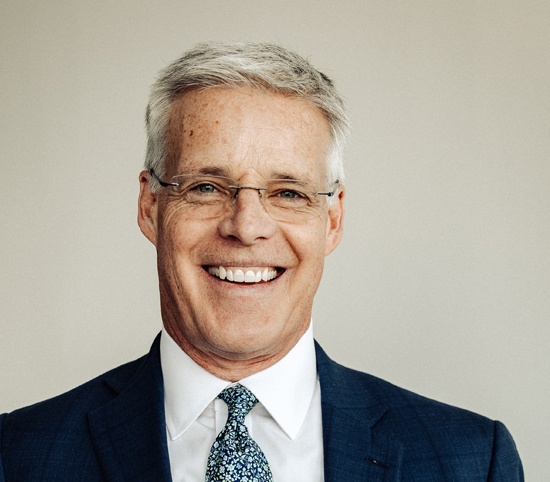Insights
Why You’re Feeling Dizzy
By Steve McKee
After more than 100 years as one of its cornerstone members, General Electric was just drummed out of the Dow Jones Industrial Average. It was a good, long run. The longest, in fact, of any organization in history.
General Electric was one of the original corporations tracked by Dow Jones when it created its “Industrial Average” all the way back in 1896. But like American Tobacco, National Lead, and Tennessee Coal and Iron before it, GE’s role in the economy has become something less than it once was.
Corporate membership in the S&P 500 tells a similar tale: Five decades ago, the average tenure of companies in the index was 33 years. Two decades ago, it was 20 years. Over the coming decade, it's forecast to shrink to 14 years. What’s going on? The business cycle – disruption, acceleration, maturation, saturation, commoditization, disruption again – is spinning ever faster.
A Deloitte study of the UK census discovered that telephone and telegraph operators enjoyed a full century of growth before jobs began to decline. Similarly, a Harvard Business Review analysis of how many decades it took various 20th-century innovations to mature noted that it took 64 years for telephones to reach 40% penetration. By contrast, smartphones achieved the same result in a single decade (by then telephone and telegraph operators had all but disappeared).
That’s why we’re all feeling a bit dizzy. The disruption cycle continues to gain velocity. Business models that once lasted for decades can now become irrelevant in one or two. Just 20 years ago in my industry, for example, digital agencies were hot growth companies. Advances in technology have already put them on the ropes.
In industry after industry, companies with whom we consult find themselves facing a new normal. Call it continuous disruption, as oxymoronic as that sounds.
A few years back, my firm worked with a brand that was struggling with long-term changes in consumer behavior that were making it less relevant every day. We identified an opening that would enable the company to rapidly but sensibly change its offering to lead the evolution of consumer tastes rather than fighting it. The management team’s response? Nah. It required too much mental energy. The company is now defunct.
The mandate to embrace continuous disruption is as real as it is difficult to accept. Just the other day, I ran into a CEO whose retail operation is going slowly, inexorably, out of business. The crazy thing is, he knows it. He also knows a pathway to resurgence that has a pretty good shot of working, but he can’t bring himself to pursue it. It involves too much change, too fast.
Tragic tales such as these offer valuable lessons. If we accept the reality of continuous disruption, we’ll be better able to regularly refresh our relevance. If we don’t – if we get stuck in our ways and become too comfortable with old, familiar business models – we’ll end up like those that went down before us. By the time we recognize the urgency of our situations, we won’t have the energy, the courage and – likely – the resources to pull it off.
To its credit, GE is belatedly but boldly trying to respond to the forces of disruption by pursuing new CEO John Flannery’s aggressive $20 billion divestiture plan. The company has already shed its locomotive manufacturing operation and its healthcare IT business, and, in what might be the most poetic move of all, may be looking to exit the light bulb business.
Think about that. GE – a brand as synonymous with the light bulb as any – will soon quit making light bulbs. The company already stopped manufacturing incandescent bulbs a few years ago in favor of longer-lasting and more efficient LEDs. That was a courageous decision for an organization so identified with such an iconic product. And it was equally impressive that a technology not invented until the 1990s could have caused such a disruption.
Speaking of 1990s inventions, do you know what the number one US television network is? Here’s a hint: it began as a mail-order DVD rental service. According to Turner Broadcasting, when measured by “gross streaming hours,” Netflix outperforms all other TV networks. That’s one reason why both Amazon and Apple have joined the chase and are spending billions of dollars developing original video content. ABC, CBS and NBC never saw it coming.
GE. The incandescent bulb. Traditional TV networks. They all had a pretty good run, wouldn’t you say?
But sometime over the past few decades, something fundamentally changed. The cycle sped up. Disruption became the norm rather than the exception. Today, industries are born, thrive and decline over a shorter time span than the average professional’s career, which explains why this generation has a lot less job stability.
It’s tough to keep business going in an industry when the industry itself can’t stay in business. But like the jet engines that GE continues to manufacture, wear and tear (not to mention fuel inefficiency) mostly occur during takeoffs and landings. Once a plane is flying, it requires a lot less effort and energy to change course.
That’s an instructive metaphor. The days when change happened in decades-long fits and starts are long gone, but it doesn’t mean we can’t adapt. Once we recognize what’s happening, we can adjust to it. Our task is to stay aloft by refueling in mid-air.
Originally published on SmartBrief on Leadership

Steve McKee
Co-founder and author, Steve specializes in addressing the most meaningful problems. Steve’s at his best when you want to change the world. He might even have some books (and some research) on that.
Sign Up for Growth Insights
"*" indicates required fields
Contact
"*" indicates required fields